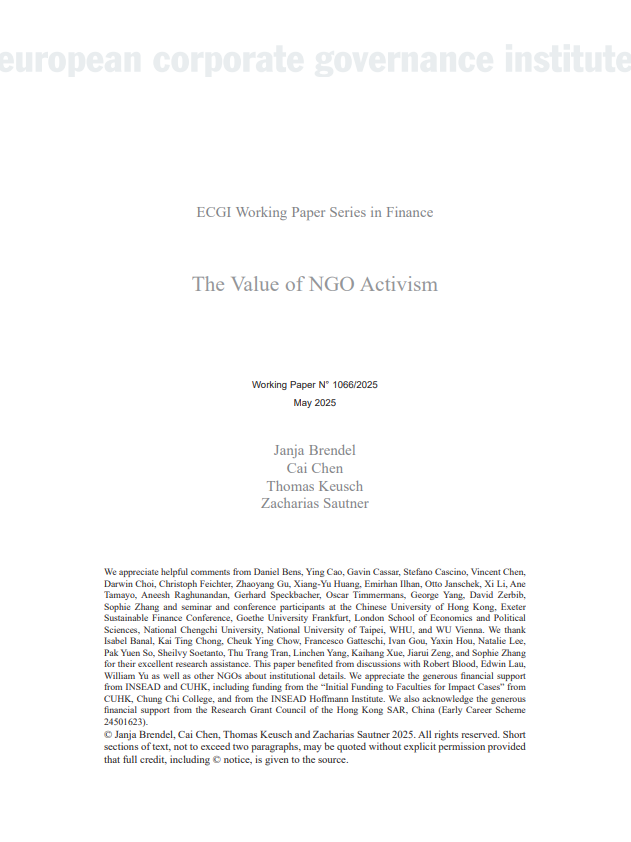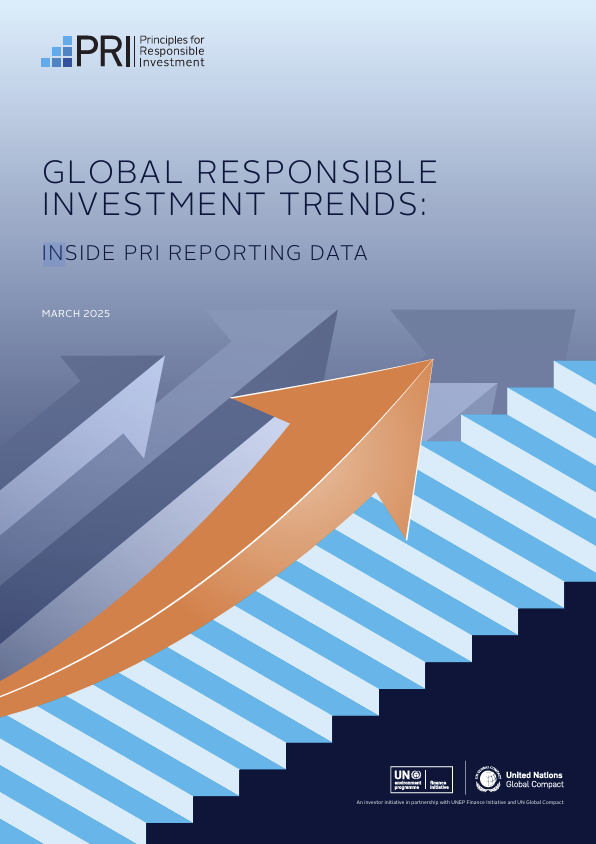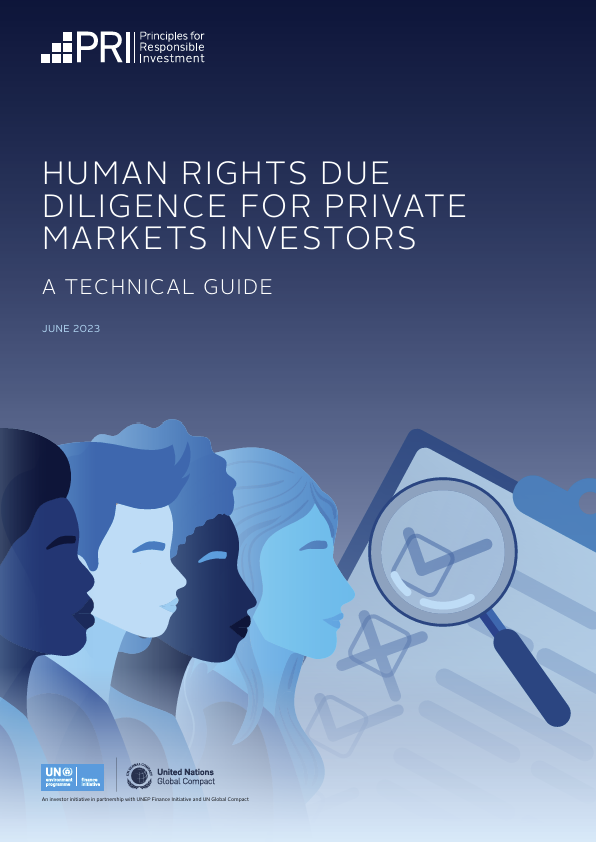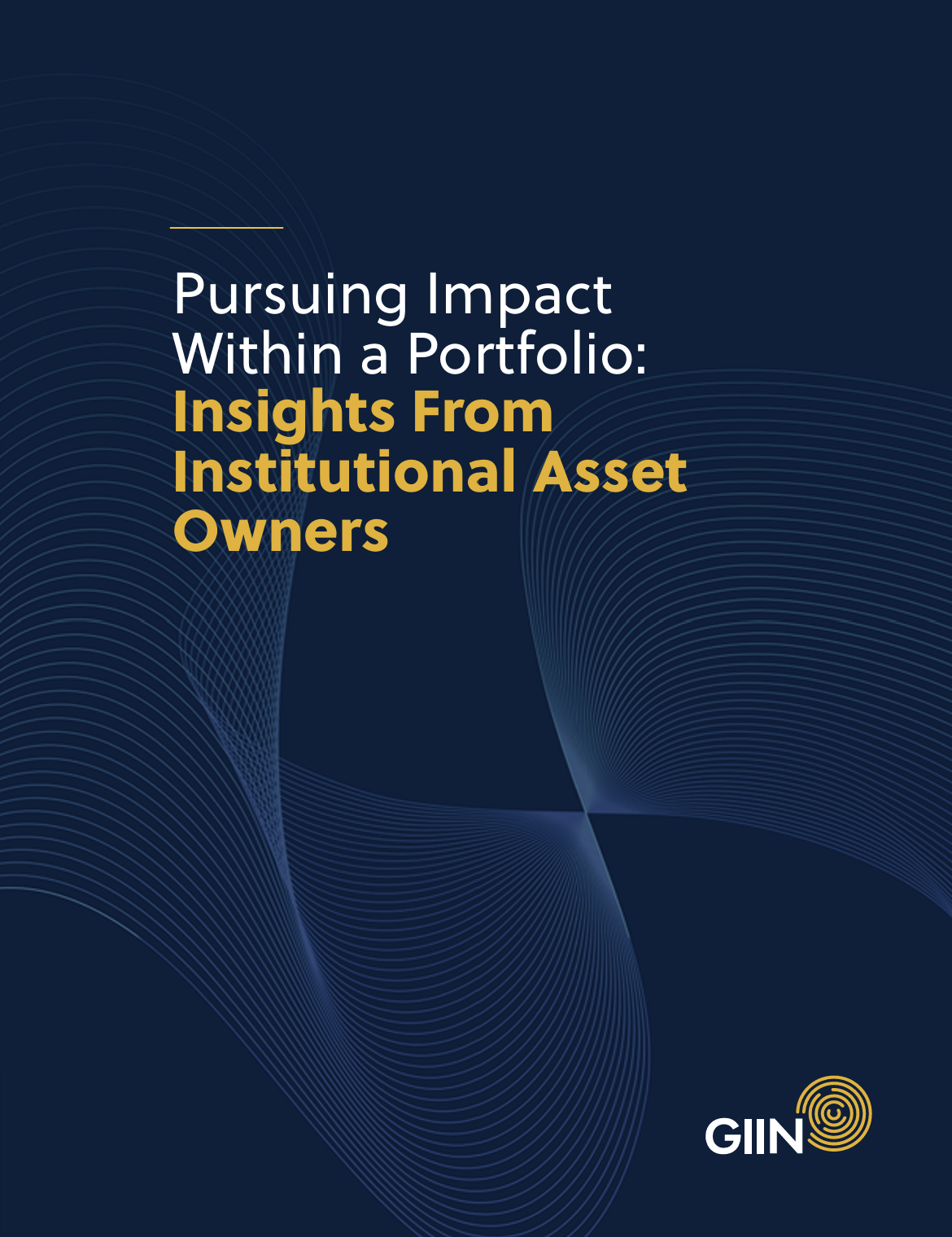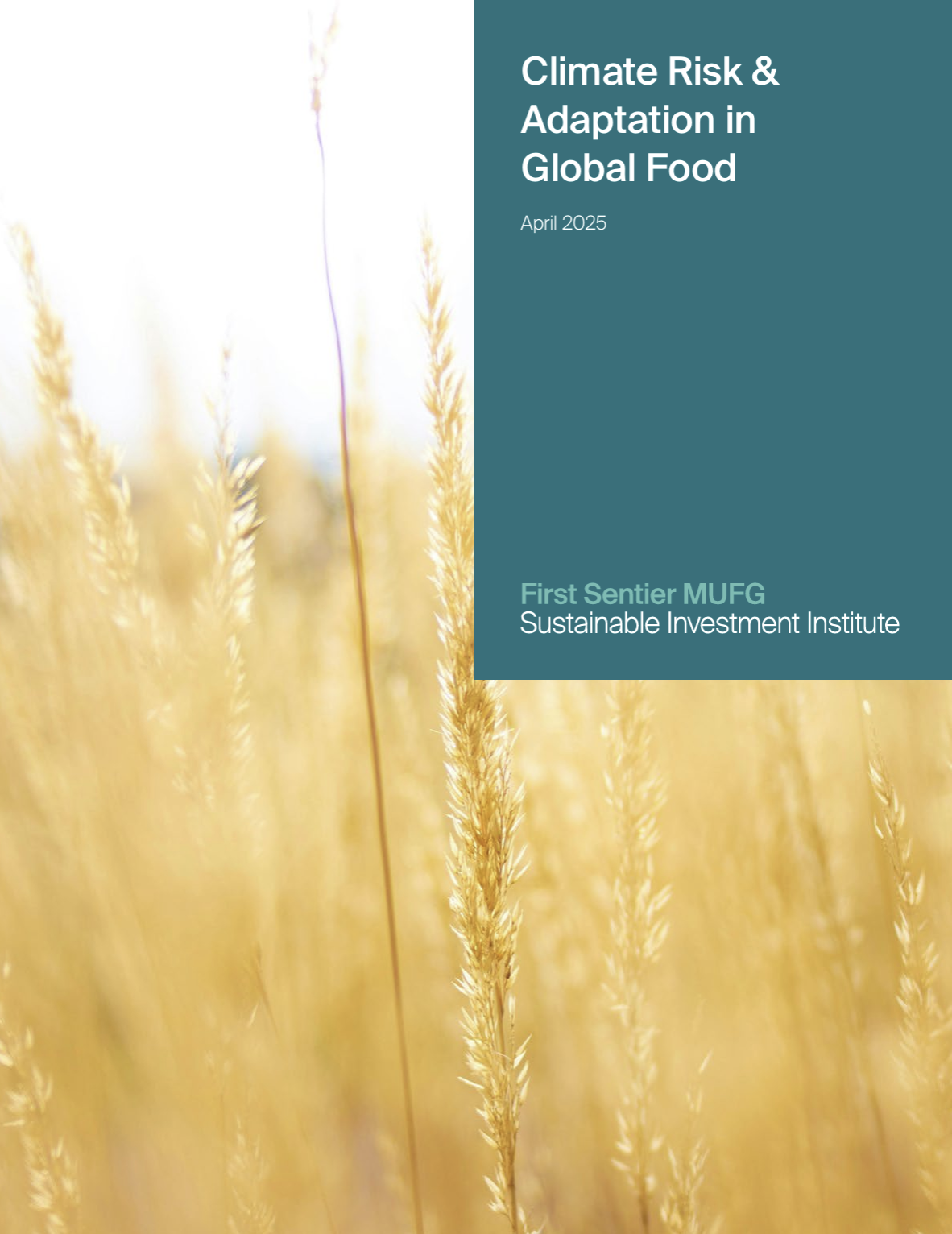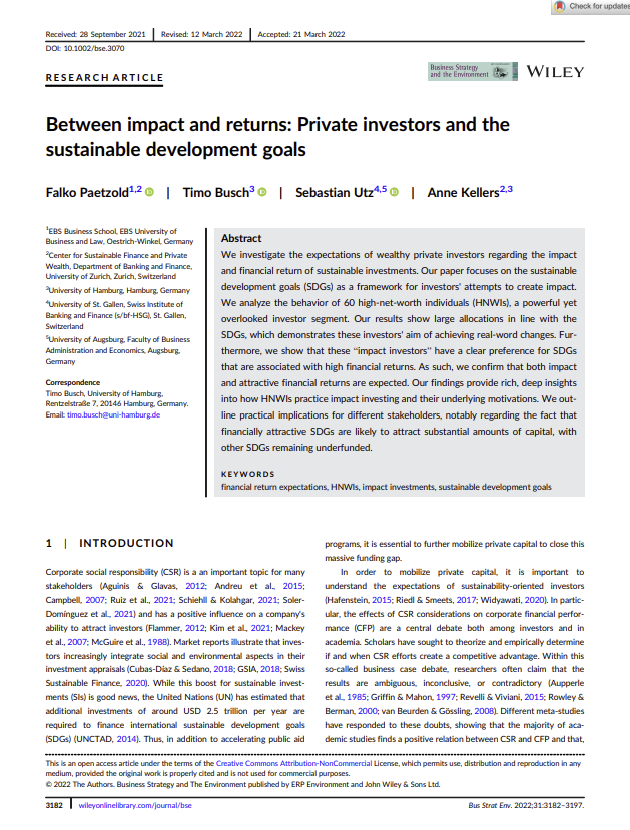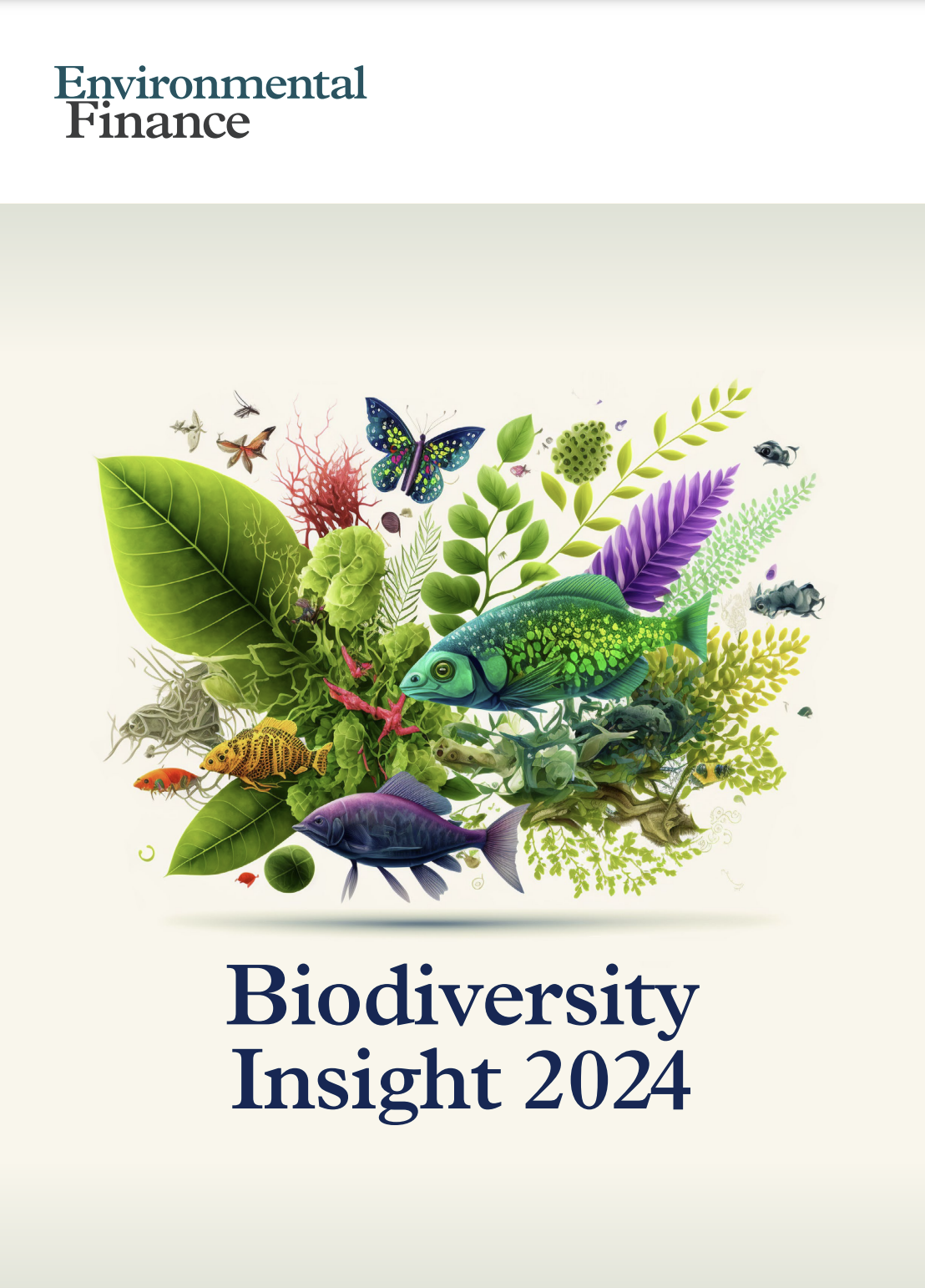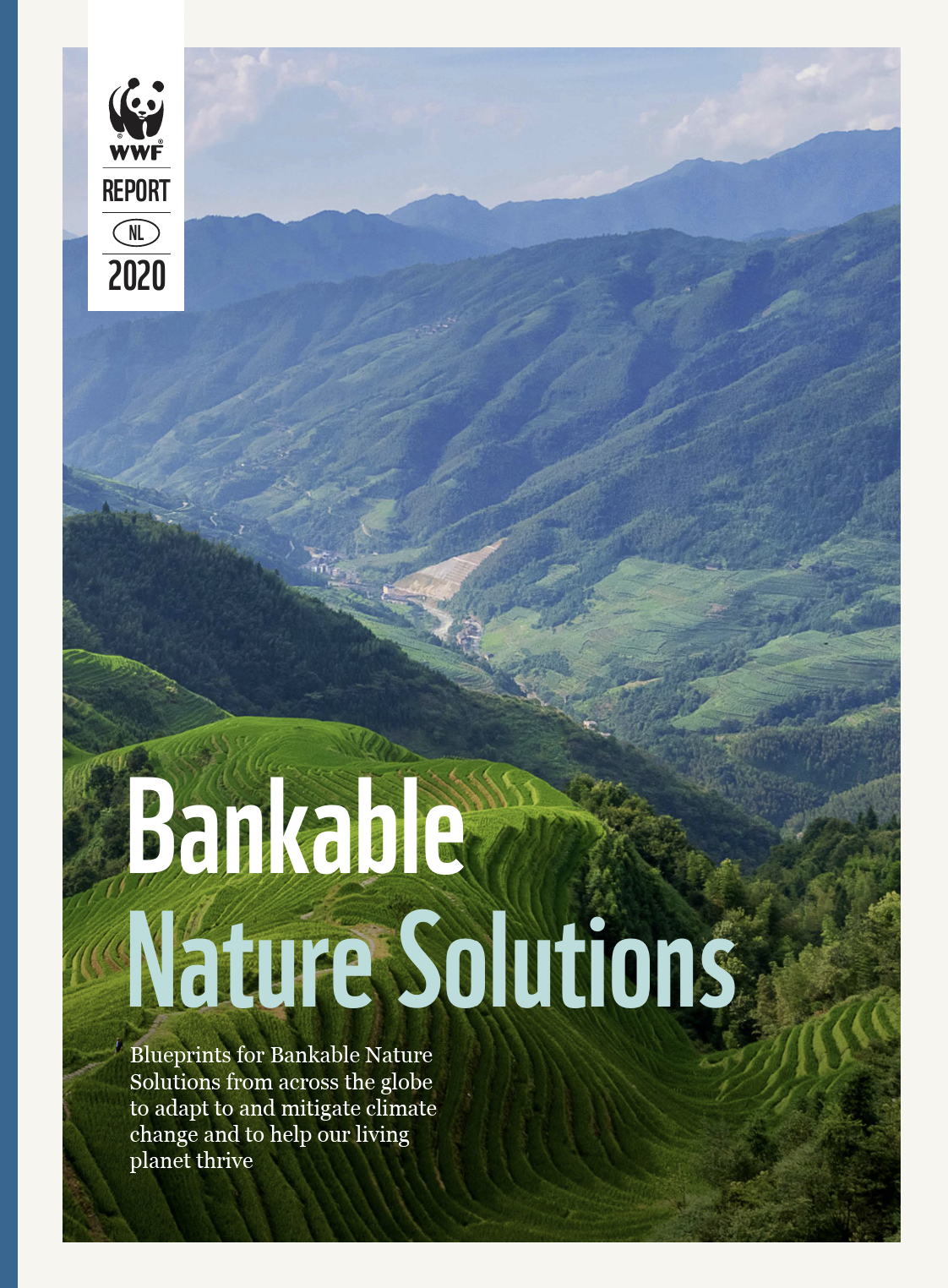Library | Location
Netherlands
Refine
97 results
REFINE
SHOW: 16


The value of NGO activism
NGO campaigns alleging environmental and social “E&S-washing” lead to negative stock and media responses, especially on financially material issues. Firms reduce direct emissions following climate-related allegations—often shifting them to supply chains. NGOs also prompt investor engagement, suggesting a monitoring role despite unintended consequences such as increased indirect emissions.
Impact economies tractions and trends: Insights from 34 GSG National Partners
This report presents insights from 34 national ecosystems advancing impact investing. It highlights trends in policy, capital mobilisation, and transparency, showing governments and institutions integrating social and environmental outcomes into investment strategies. It tracks growth in green finance, outcome-based funding, and investment readiness across emerging and developed economies.
Global responsible investment trends: Inside PRI reporting data 2025
The 2025 PRI report analyses data from 3,048 signatories, highlighting trends in climate risk management, stewardship, and human rights. Asset owners show increased engagement, with climate and social issues gaining priority. Investors continue integrating responsible investment into decision-making and oversight, with varied progress across policy, governance, and disclosure practices.
Human rights due diligence for private markets investors: A technical guide
This guide outlines how private markets investors can integrate human rights due diligence into investment processes, aligned with the UN Guiding Principles. It covers policy commitments, risk assessment, stakeholder engagement, and remedy provision to address human rights impacts, mitigate risk, and meet evolving legal and societal expectations.
Pursuing impact within a portfolio: Insights from institutional asset owners
This report explores how institutional asset owners integrate impact goals into portfolio strategy. Through four case studies, it examines aligning financial returns with social and environmental outcomes using an impact lens. It highlights investment approaches addressing climate change, health, regional development and systemic inequality across diverse asset classes and geographies.
Climate risk and adaptation in global food
The report outlines rising climate risks to global food supply chains, projecting up to $38 trillion in damages by 2050. It explores mitigation and adaptation strategies across crops, livestock, and fisheries, and highlights investor actions to build resilience, support sustainable practices, and adapt to shifting market, environmental, and regulatory conditions.
Between impact and returns: Private investors and the sustainable development goals
Wealthy private investors increasingly align their portfolios with the UN Sustainable Development Goals (SDGs), seeking both measurable impact and financial returns. Investors favour SDGs linked to higher expected profits, leading to underinvestment in less profitable goals. Findings are based on portfolio data, surveys, and interviews with 60 high-net-worth individuals.
Environmental Finance's biodiversity insight series
This series explores the evolving role of biodiversity in sustainable finance, investment strategies, and regulatory developments. It examines biodiversity risk, natural capital investment, reporting frameworks, and financial instruments supporting conservation efforts. The series provides insights into emerging market mechanisms, data challenges, and the integration of biodiversity considerations into financial decision-making.
Bankable nature solutions
This report aims to support readers in understanding Bankable Nature Solutions (BNS) and start identifying and developing their own BNS project by providing Blueprints for Bankable Nature Solutions from across the globe to adapt to and mitigate climate change and to help our living planet thrive.
The race against time for smarter development: To be smart, the digital revolution will need to be inclusive
The report underscores the need for inclusivity in the digital revolution, highlighting gender disparities in STEM fields. Women are underrepresented in digital and engineering roles, limiting their access to future job opportunities. Policy interventions, improved workplace conditions, and equitable funding are essential to fostering diversity in technological innovation and ensuring sustainable, inclusive development.
CDSB framework: Application guidance for biodiversity-related disclosures
The CDSB Framework application guidance for biodiversity-related disclosures (the Biodiversity Application Guidance) has been produced by CDSB to assist companies in the disclosure of the material information about the risks and opportunities that biodiversity presents to an organisation’s strategy, financial performance and condition within the mainstream report (biodiversity-related financial disclosure). It is designed to supplement the CDSB Framework for reporting environmental and climate change information to investors (CDSB Framework).
Natural capital and organizations strategies: An overview of available tools
This guide outlines a variety of tools and methodologies designed to help companies integrate natural capital considerations into their business decision-making processes. It provides detailed descriptions of different tools, case studies, and practical examples, enabling businesses to assess their environmental impacts, dependencies, and opportunities. The guide aims to promote sustainable business practices by highlighting the importance of valuing natural capital.
Handbook for the implementation of nature-based solutions for water security: Guidelines for designing an implementation and financing arrangement
This handbook offers operational advice and project preparation guidelines, including hands-on formats that project proponents can use continuously and iteratively to develop the entire business case of NbS, enabling them to go from the idea stage towards an investment proposal or investment project stage that can be effectively assessed by potential investors. To illustrate the use of these guidelines the handbook presents the results of their application to three cases in Europe within the NAIAD project and to one case in Asia that was part of the Water as Leverage for Resilient Cities Asia programme.
Pensions in the age of artificial intelligence
The report explores how artificial intelligence (AI) and machine learning (ML) can address challenges in global pension systems. It highlights AI's potential to enhance governance, personalisation, fraud prevention, and investment strategies while emphasising ethical implementation and data privacy considerations to optimise retirement outcomes and ensure system sustainability.
Accounting for cryptocurrency climate impacts
The report examines the greenhouse gas (GHG) emissions associated with cryptocurrencies, proposing a hybrid allocation method to attribute these emissions to stakeholders based on cryptocurrency holdings and transactions. It highlights the environmental impact of Proof-of-Work protocols, the efficiency of Proof-of-Stake, and offers guidance aligned with GHG Protocol standards.
Environmental impact of digital assets
The report highlights the environmental impact of digital assets, focusing on energy-intensive proof-of-work (PoW) consensus mechanisms in cryptocurrencies like Bitcoin. It underscores significant carbon emissions and advocates transitioning to less energy-demanding models, renewable energy use, and cross-border cooperation. Policy recommendations include targeted regulation, enhanced data transparency, and leveraging distributed ledger technologies for sustainable finance.
